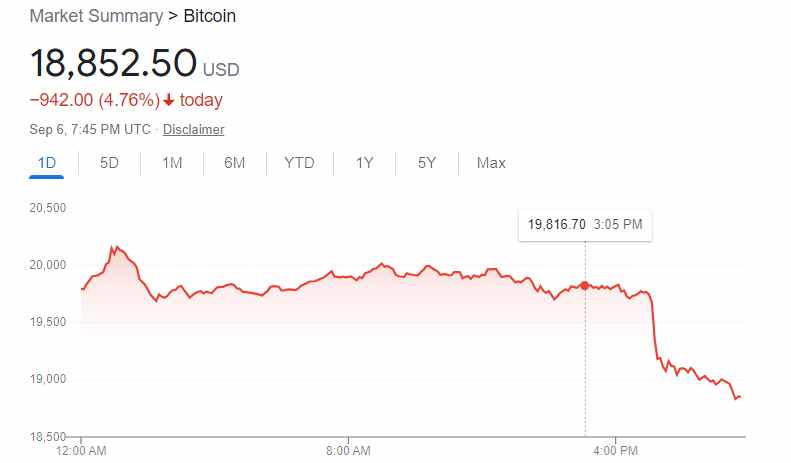Bitcoin’s rollercoaster ride continues, falling yet again below $19,000 as crypto winter continues

A few months after the pandemic began, thousands if not millions of crypto enthusiasts and investors joined the crypto bandwagon and invested their life savings and stimulus checks in bitcoin. Some saw it as the opportunity to become overnight millionaires or retirement safety net. One family even sold everything they owned to invest in Bitcoin.
In mid-April 2021, the world’s most popular cryptocurrency reached its peak of $64,829.14. A month later, bitcoin plunged by about 40% from its record high, and $300 billion was wiped off the crypto market. On May 19, 2021, bitcoin hit an intraday low of around $36,189 at 7:30 a.m. Eastern Time. But that was just the beginning. Bitcoin has since lost about half of its value since then.
Today, the price of bitcoin is almost exactly where it was in June when it fell to $18, 555. 80. As of the time of writing, Bitcoin is now trading at $18,852.50, just about $3 below where it was three months ago.

So, what’s really going on? One of the biggest challenges to bitcoin’s mainstream adoption is its volatility. The other is the boom and bust cycles that further impede its institutional adoption. Although crypto purists think bitcoin is decentralized with little to no government influence, unfortunately, the opposite is true. The price of bitcoin is determined by many factors including financial regulations, the stock market, government monetary policies, access to cheap interest rates, and global economic conditions.

Bitcoin Price as of June 30, 2022
Meanwhile, some analysts say bitcoin may fall even further and it could be heading down to $10,000. Leigh Drogen, general partner and CIO at Texas-based digital assets quantitative hedge fund Starkiller Capital, wrote:
“We’re now in the liquidation phase, [with] firms blowing up,” like Three Arrows Capital, or 3AC, the crypto hedge fund that is having positions liquidated, per a report from The Block, “and on-chain liquidations of over-levered players.” He adds that if Bitcoin slips below $20,000, “there is going to be some serious forced selling from those really big players,” he suggests, and “that may kind of bring about the eventuality of the bottom.”
Other analysts say a ‘massive capitulation’ is on the horizon. “Bitcoin’s daily range has narrowed massively, and this is giving us an indication that a massive capitulation is coming,” said Naeem Aslam, an analyst at broker AveTrade. “We believe that this capitulation can be any day now as Bitcoin has been trading in a narrow range for a long period of time.”
Meanwhile, other analysts think bitcoin’s current volatility is relatively low compared to historical records. For example, according to data firm Coinglass, Bitcoin’s average 30-day volatility, a measure of how its price varies over a set period of time, has dropped to 2.7% from over 4% in early July. This may be a good thing for bitcoin.
“This has been a relatively long period of decreased volatility, it’s now beyond anything we’ve seen in even 2019 where these levels lasted around a quarter to a quarter-and-a-half,” said Stéphane Ouellette, CEO at crypto derivatives provider FRNT Financial.

